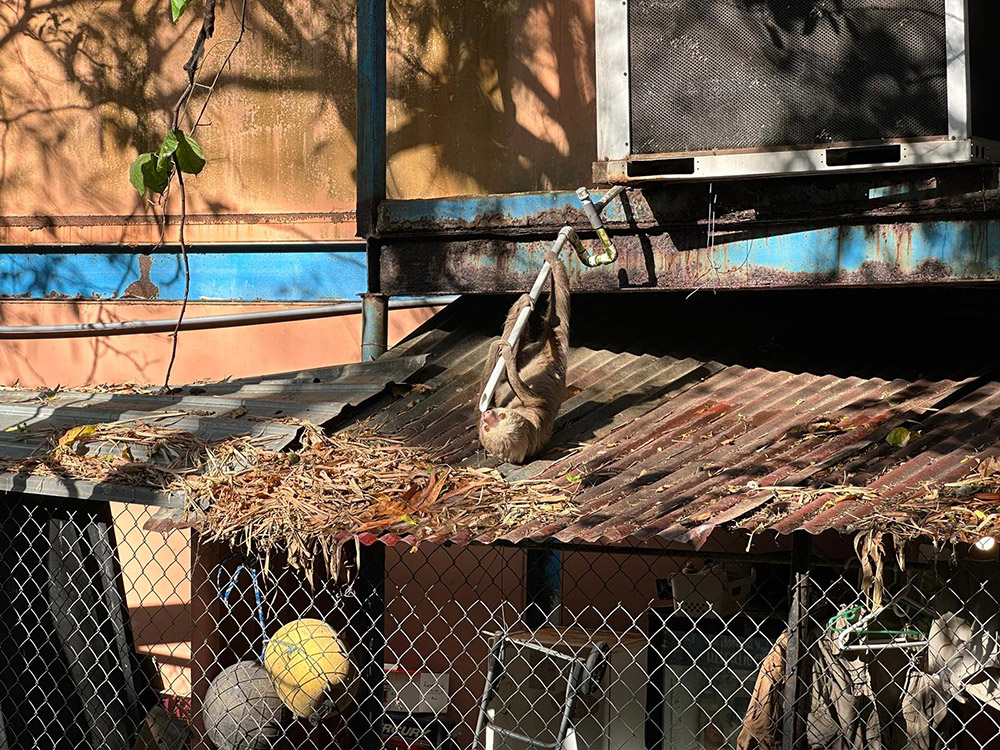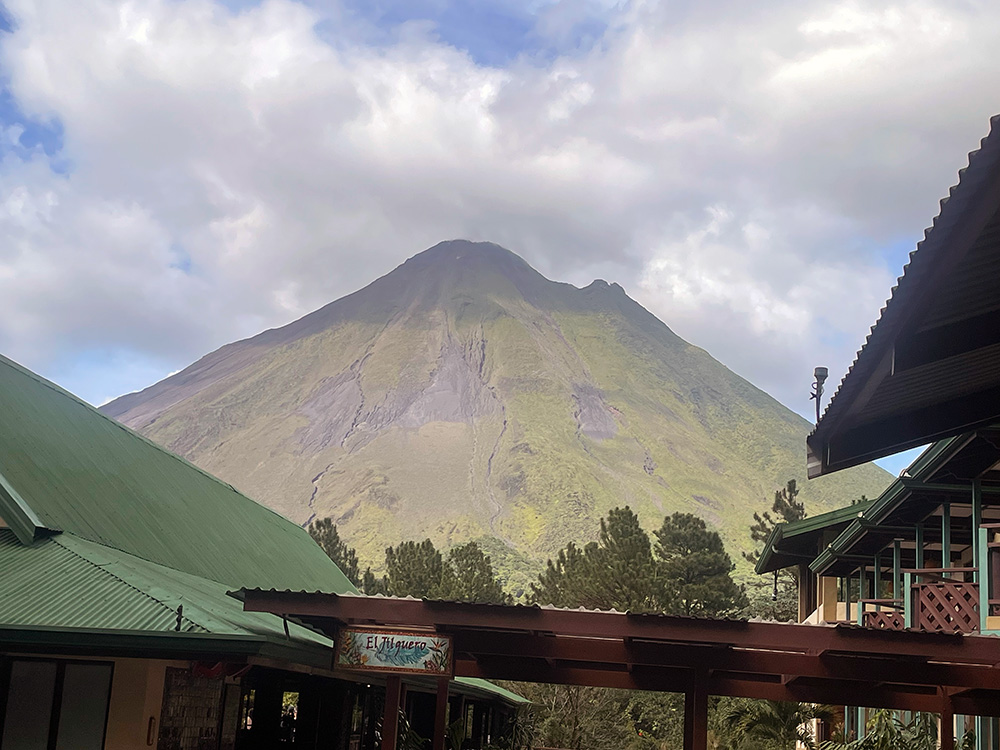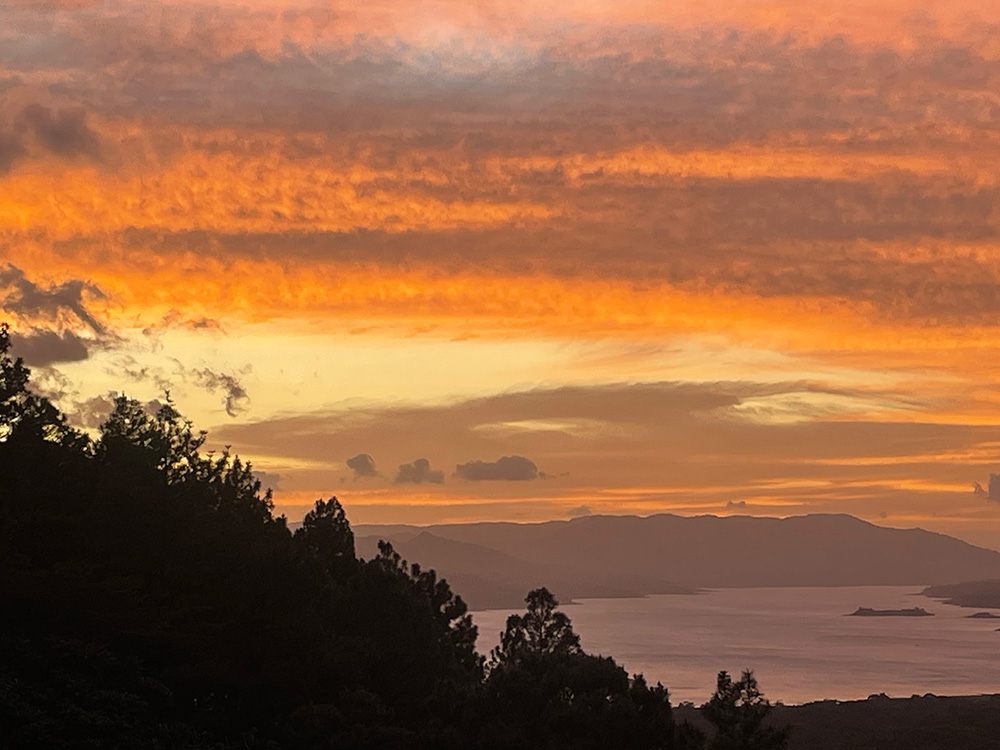 Expedition in Costa Rica and Panama, February, 2024
Expedition in Costa Rica and Panama, February, 2024
Twenty-five friends, old and new, descended on Central America to explore its famous rain forests, swim in its tropical waters, and experience the single biggest engineering feat of the early 20th Century, the Panama Canal. Many of us scheduled extensions before and/or after our eight-day eco-cruise on the Lindblad/National Geographic Quest, a 224’ expedition ship with over 40 crew serving 100 passengers.
Cecilia and I chose an extension before our February 17 cruise departure in the beautiful, awe-inspiring Arenal region, active with several eruptions in the 21st century and with steam drifting out of its caldera.
We stayed at the esteemed eco-lodge, Arenal Observatory, at the foot of the volcano, while being less than 30 minutes from the nice tourist town of La Fortuna. Others stayed at the beautiful Royal Corin Hot Springs and Resort; still others at eco-resorts in the Monte-Verde region, deep in the rainforest.
 Every day we had some great adventure; a “river safari” on a raft where we saw howler monkeys, vultures, heron, sloths, and so much more; horseback riding to a waterfall (well, almost—after the horses went as far as they could go, we had a 500-step descent deep into a ravine (and back) in order to see the 100+’ waterfall! Worth it, as it was roaring.
Every day we had some great adventure; a “river safari” on a raft where we saw howler monkeys, vultures, heron, sloths, and so much more; horseback riding to a waterfall (well, almost—after the horses went as far as they could go, we had a 500-step descent deep into a ravine (and back) in order to see the 100+’ waterfall! Worth it, as it was roaring.
We had day and night nature walks in the rainforest, learning from talented naturalists about all sorts of flora and fauna: tree frogs, tiny but highly venomous snakes, wrens, flycatchers, raptors, wide variety of hummingbirds, and big birds called Great Curassows. Also, an incredibly cute member of the racoon family called a ‘Cuati’ (pro Ku-What-Ti).
In La Fortuna, due to the proximity to the volcano, you couldn’t throw a rock without hitting a hot springs resort. We visited one of the largest, Baldi Resort, with over 30 different naturally heated pools. They were all pristine, getting their energy from rocks heated by magma! Cecilia and I used our last afternoon ashore to laze about remaining close to the swim-up full bar!
 Then, it was time for Embarkation Day and a busy transfer by prop plane and bus to get back to San Jose, Costa Rica and on to Puerto Caldera to meet the ship.
Then, it was time for Embarkation Day and a busy transfer by prop plane and bus to get back to San Jose, Costa Rica and on to Puerto Caldera to meet the ship.
Our ship was very well appointed and the staff professional, skilled and VERY courteous. Most importantly, it was clear that they loved sharing this part of the world with us. While it was a bit of an adjustment to be passengers rather than our own skippers and crew, we soon settled into the shipboard routine and made the most of the continual flow of eco-activities from eco-hikes to cultural visits.
Here’s a brief synopsis of the sorts of activities we enjoyed:
- Costa Rica has a long history of gold mining and we got to learn how panning for gold was done in the old days. The gold prospector had pivoted his business from panning to teaching eco-tourists how it was done as Costa Rica has prohibited the industry throughout much of the country to protect river/stream eco-systems.
- Did you know that any palm tree has ‘heart of palm’ in it? Did you know that only a few varieties of palms are practical for commercial harvesting of the product? Well, now we do. Heartwarming presentation from a woman entrepreneur who never finished grade school but who now has a thriving farm and eco-tour based business that employees many and supports her entire extended family.
- We had a “drift snorkel” on the full moon that turned into a “rapids snorkel” as the tidal current was unusually high. Got our attention for a few minutes! However, flying over the coral and fish at up to two knots was invigorating and super fun!
- A variety of eco-walks and hikes were on offer, with each revealing the living wonders of the Costa Rican Rain Forest in differing ways. There were longer, more challenging treks and shorter, flatter “walks” to suit everyone’s taste.
- We had recaps and scientific presentation on wildlife almost every night back on the ship.
 Then, we found ourselves at anchor at the mouth of the mighty Panama Canal. We awaited our Canal Pilot who would lead our ship through the locks and enjoyed preparatory presentations from staff on the secrets of the canal, both in current operations and the incredible history of its creation, with all the grandeur and warts, the brilliant success of USA and the catastrophic failures of the early attempts by French investors.
Then, we found ourselves at anchor at the mouth of the mighty Panama Canal. We awaited our Canal Pilot who would lead our ship through the locks and enjoyed preparatory presentations from staff on the secrets of the canal, both in current operations and the incredible history of its creation, with all the grandeur and warts, the brilliant success of USA and the catastrophic failures of the early attempts by French investors.
This was a main reason for us to choose this adventure and it exceeded our high expectations. Our guides on the ship were trained experts on the history, the politics and, most especially, the incredible engineering. I’ve been in locks before, but these were on a whole other scale.
- The Canal now reuses 40% of the fresh water that flow into and out of the locks.
- All the water was gravity fed by design, so this has presented some challenges, but the Canal Authority has plans for that 40% number to grow in light of the drought of the last few years in the Canal Zone.
- While most assume that since the canal connects the eastern waters of the Caribbean with the western waters of the Pacific, the Canal runs nearly North and South due to the ‘S’ curve in Panama’s geography.
- Panama operates the Canal with guidance and advice from USA engineering and operations experts.
- Panama’s economy has been reborn by ownership of the Canal and it is in a much better place, democratically, partly as a result of the wealth generated by the Canal.
- Panama recently opened an additional set of locks, designed for the largest container ships, nicknamed “Panamax” ships as they were purpose built to ‘just fit’ the larger set of locks.
- The cheapest transit fee for the Canal was for $46 USD, by a swimmer. The most expensive has been well over a million dollars. Lindblad/Nat Geo paid $40,000 USD for our transit.
- Miraflores Lake, and the two sets of locks, north and south, allowed the American builders to avoid a monstrous excavation which was partially the reason for the earlier failure by the private French investors (along with disease, 19th century technology. and hubris from the leader of the investors).
We all had a marvelous time in two incredibly interesting, bio-diverse and beautiful countries and want to find our way back there some day!

